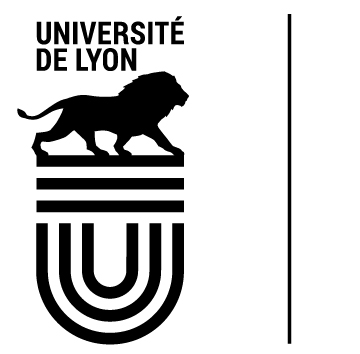[1] Mackay, D. and Fraser, A. 2000. Bioaccumulation of persistent organic chemicals: Mechanisms and
models.
Environmental Pollution. 110:375-391.
https://doi.org/10.1016/S0269-7491(00)00162-7
[2] Commission Regulation (EU) No 283/2013 of 1 March 2013 setting out the data requirements for
active substances, in accordance with Regulation (EC) No 1107/2009 of the European Parliament
and of the Council concerning the placing of plant protection products on the market Text with EEA
relevance. Pages 1–84.
Official Journal of the European Union,
93, 3.4.2013.
https://eur-lex.europa.eu/legal-content/EN/ALL/?uri=CELEX%3A32013R0283
[3] OECD (2012) Test No. 305: Bioaccumulation in Fish: Aqueous and Dietary Exposure,
OECD Guidelines for the Testing of Chemicals,
Section 3, OECD Edition, Paris,
https://eur-lex.europa.eu/legal-content/EN/ALL/?uri=CELEX%3A32013R0283
[4] Charles, S., P. Veber, and M. L. Delignette-Muller. 2018. MOSAIC: a web-interface for statistical
analyses in ecotoxicology.
Environmental Science and Pollution Research,
25:11295-11302.
https://doi.org/10.1007/s11356-017-9809-4
[5] EFSA. 2014. Scientific Opinion on good modelling practice in the context of mechanistic effect
models for risk assessment of plant protection products.
EFSA Journal 12.
https://www.efsa.europa.eu/en/efsajournal/pub/3589
[6] Fernández-i-Marín, X. (2016). ggmcmc: Analysis of MCMC samples and Bayesian inference.
Journal of Statistical Software,
70(9), 1-20.
https://doi.org/10.18637/jss.v070.i09
[7] Plummer, M. (2019). rjags: Bayesian Graphical Models using MCMC. R package version 4-10.
https://CRAN.R-project.org/package=rjags
[8] R Core Team (2019). R: A language and environment for statistical computing.
R Foundation for Statistical Computing, Vienna, Austria.
https://www.R-project.org/.
[9] Kellner, K. (2019). jagsUI: A Wrapper Around 'rjags' to Streamline 'JAGS' Analyses. Version 1.5.1.
https://cran.r-project.org/web/packages/jagsUI/index.html
[10] Ratier, A.
et al. (2021). A new on-line tool for the calculation of bioaccumulation metrics of active substances within living organisms: MOSAIC
Bioacc.
bioRxiv.
https://www.biorxiv.org/content/10.1101/2020.07.07.185835v1.
[11] Gelman, A. and Rubin, D. (1992). Inference from iterative simulation using multiple sequences.
Statistical Science,
7:457-511.
https://www.jstor.org/stable/2246093
[12] Vehtari, A.
et al. (2019). Rank-normalization, folding, and localization: An improved R for assessing convergence of MCMC.
arXiv:1903.08008v3.
https://arxiv.org/ct?url=https%3A%2F%2Fdx.doi.org%2F10.1214%2F20-BA1221&v=8607c76e
[13] Spiegelhalter, D., Best, N., Carlin, B. and van der Linde, A. (2002). Bayesian measures of model complexity and fit (with discussion).
Journal of the Royal Statistical Society Series B,
64: 583-639.
https://doi.org/10.1111/1467-9868.00353.
[14] Ciccia, T. (2019). Accumulation et devenir du mercure chez l'espèce sentinelle
Gammarus fossarum : de l'expérimentation au développement d'un modèle toxicocinétique multi-compartiments. Rapport de stage de Master 2, INRAE.
[15] Crookes, M. and Brooke D. (2011). Estimation of fish bioconcentration factor (BCF) from depuration data. Report. Environmental Agency, Bristol, UK.
https://assets.publishing.service.gov.uk/government/uploads/system/uploads/attachment_data/file/291527/scho0811buce-e-e.pdf.
[16] Larisch, W., Brown, T.N. and Goss, K.‐U. (2017). A toxicokinetic model for fish including multiphase sorption features.
Environmental Toxicology and Chemistry,
3: 1538-1546.
https://doi.org/10.1002/etc.3677.
[17] Ashauer, R.
et al. (2012). Significance of xenobiotic metabolism for bioaccumulation kinetics of organic chemicals in
Gammarus pulex.
Environmental Science Technologie,
46: 3498-3508.
https://doi.org/10.1021/es204611h.
[18] Schuler, L.J.
et al. (2003). Toxicokinetics of sediment-sorbed benzo[a]pyrene and hexachlorobiphenyl using the freshwater invertebrates
Hyalella azteca,
Chironomus tentans, and
Lumbriculus variegatus.
Environmental Toxicology and Chemistry,
22: 439-449.
https://doi.org/10.1002/etc.5620220227.








